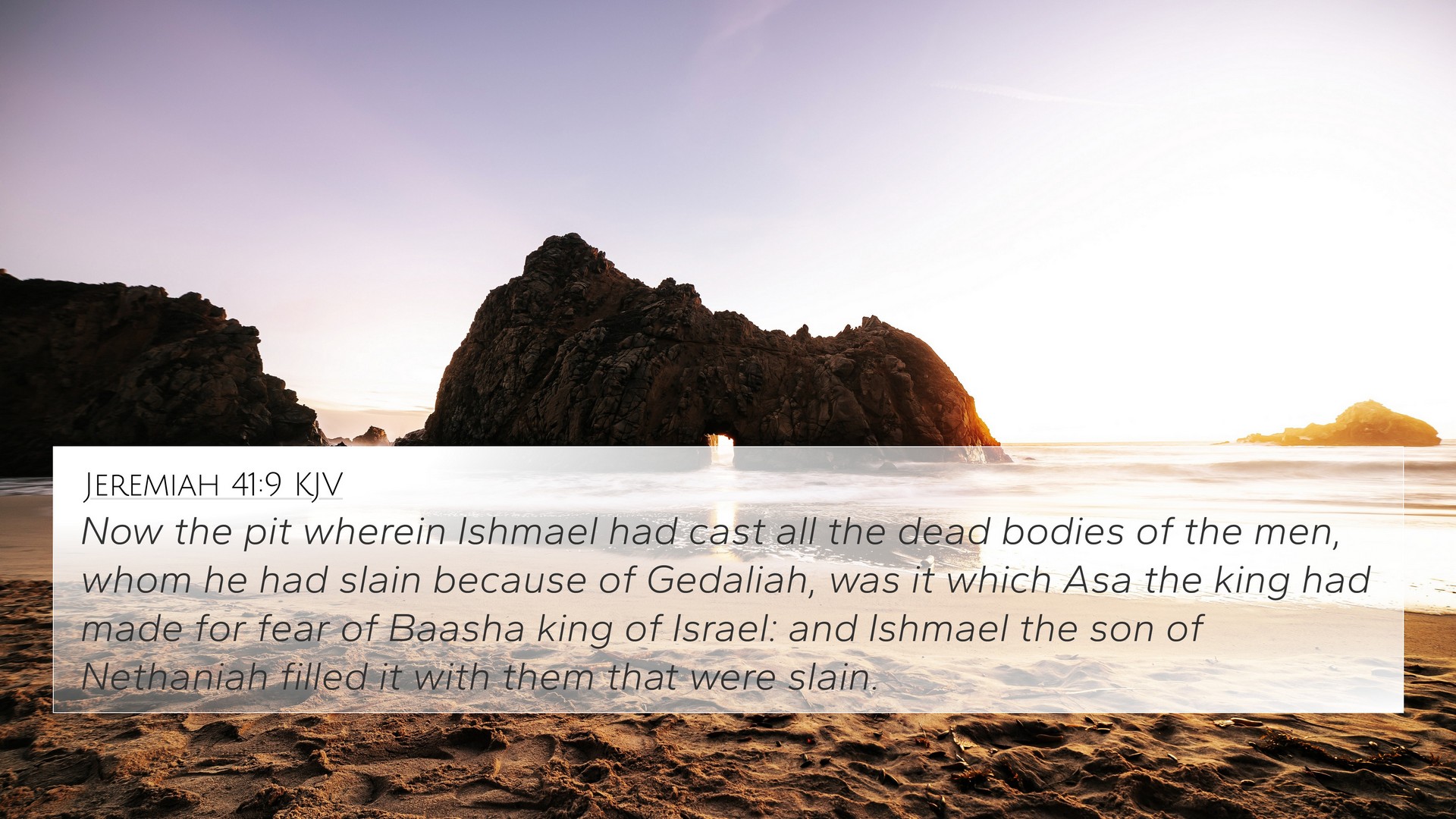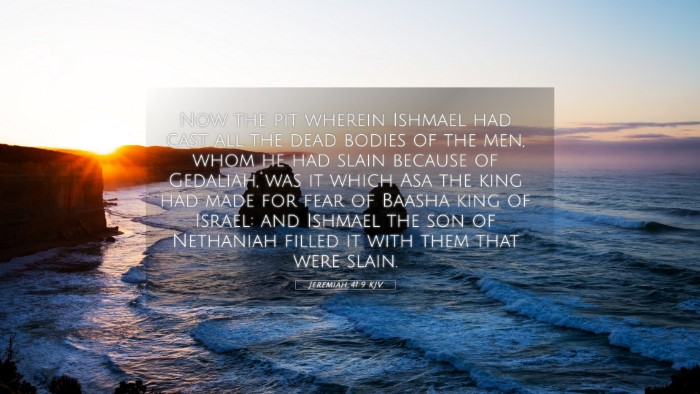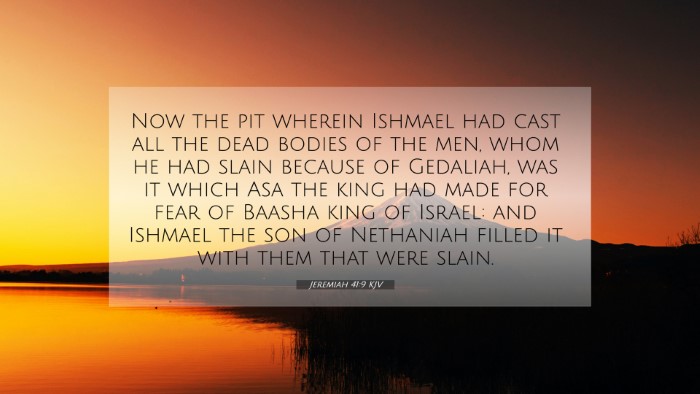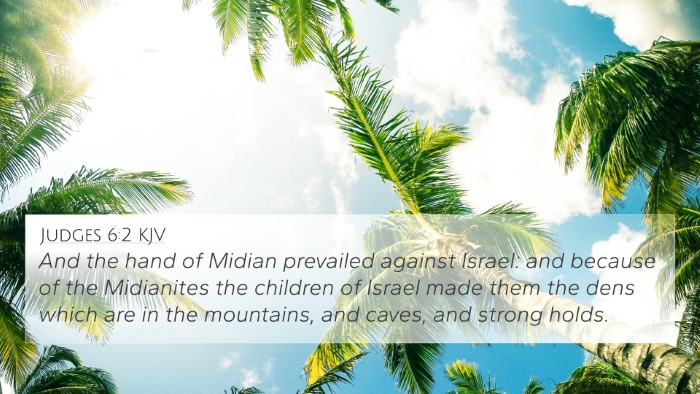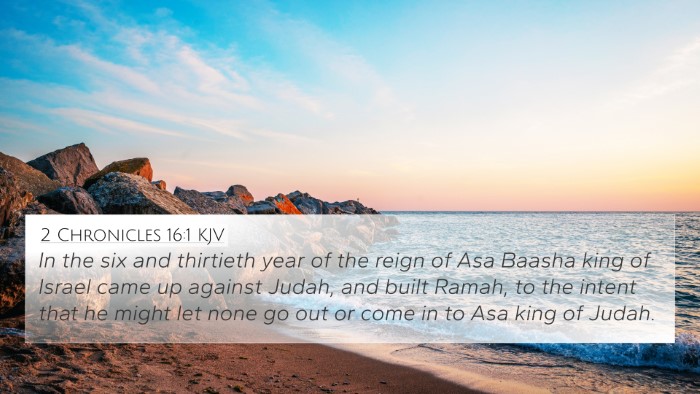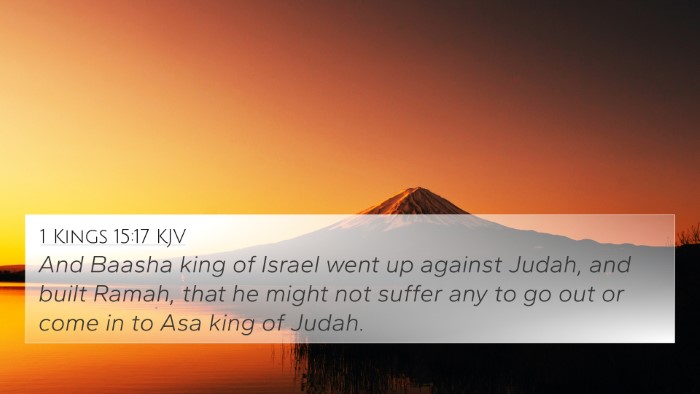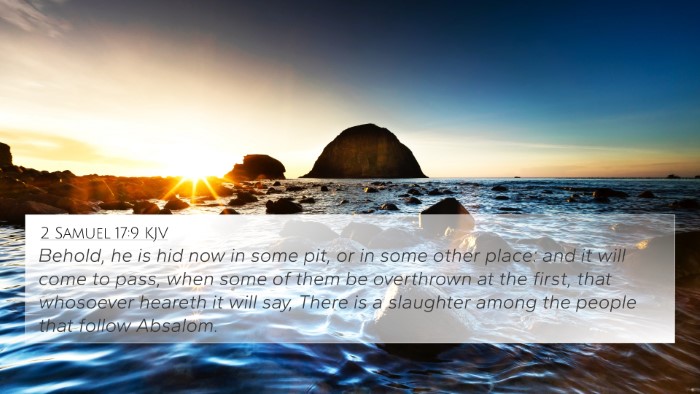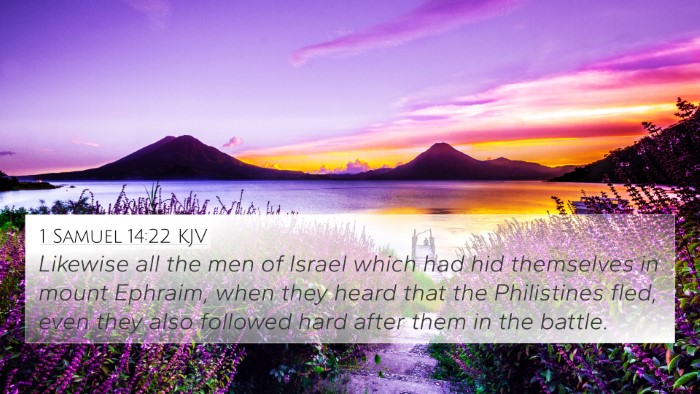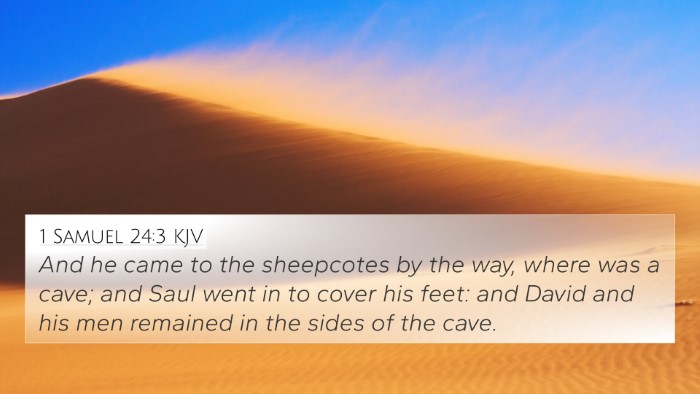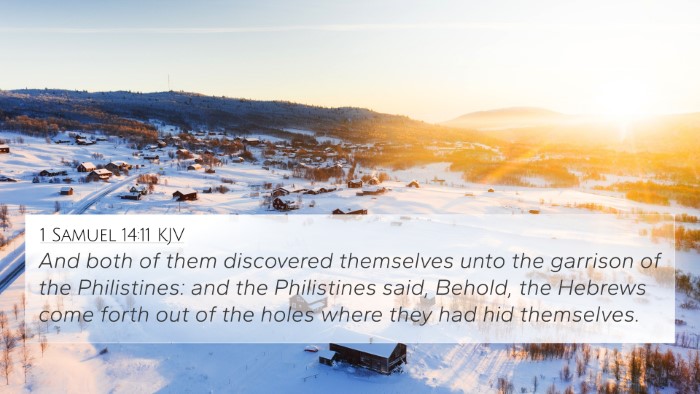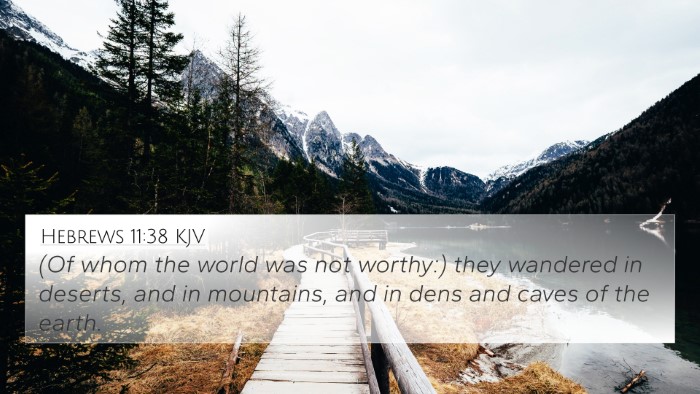Understanding Jeremiah 41:9
Jeremiah 41:9 reads: "Now the pit into which Ishmael had cast all the dead bodies of the men whom he had slain because of Gedaliah was the one that King Asa had made for fear of Baasha king of Israel; it is called the Pit of the Sons of Hannah." This verse vividly illustrates the grave aftermath of political conflict and highlights the consequences of disobedience within the historical context of Israel.
Verse Context
This verse occurs in a narrative detailing the actions of Ishmael, who assassinates Gedaliah, the appointed governor of Judah. The mention of Ishmael's actions serves to show the repercussions of returning to the political instability that plagued Israel. The last portion of the verse speaks of a pit, reminding us of the historic King Asa and his actions, which were born out of fear and desperation.
Commentary Insights
-
Matthew Henry's Commentary:
Henry emphasizes the moral implications of Ishmael's heinous act, noting how disobedience leads to chaos. The pit symbolizes both a literal burial of the dead and a metaphorical grave for the political ambitions that led to such treachery.
-
Albert Barnes' Notes:
Barnes draws attention to the significance of the pit relating to previous rulers and the dire consequences of leadership failures. He points out that Asa's fear led to actions that created lasting problems, linking historical behaviors with contemporary consequences.
-
Adam Clarke's Commentary:
Clarke elaborates on the pit's history, illustrating how past actions have a resonance in present events. He interprets the pit as a representation of God's judgment, both through the actions of Ishmael and the remembrance of past kings like Asa.
Cross-References
This verse connects to several others, providing an intricate web of biblical storytelling and thematic resonance:
- Jeremiah 40:5: Depicts the events leading to Gedaliah's appointment, emphasizing the fragility of governance.
- 2 Kings 25:25: Reflects on the aftermath of the Babylonian conquest, paralleling themes of destruction and betrayal.
- Jeremiah 39:6-7: Discusses the fate of Zedekiah, whose disobedience led to severe repercussions.
- 2 Chronicles 14:9-12: Chronicles the fear of King Asa and his reliance on human strategies instead of divine protection.
- 1 Samuel 15:23: Illustrates that rebellion against God is akin to the sin of witchcraft, reinforcing the severity of disobedience.
- Matthew 23:37: Jesus laments over Jerusalem, a city that has consistently resisted divine guidance, paralleling Jeremiah's prophetic woes.
- Luke 3:4: References the role of prophetic voices in Israel’s turmoil, drawing a line from Old Testament warnings to New Testament fulfillment.
- Proverbs 28:2: Highlights the chaos that arises from the lack of wisdom in leadership roles, directly relating to Ishmael's actions.
- Psalm 9:16: Reflects God’s judgment upon those who engage in ruthless acts, tying back to the themes found in Jeremiah.
- Isaiah 14:31: Discusses the downfall of nations acting outside of God’s will, echoing the destructive paths of both Asa and Ishmael.
Thematic Bible Connections
This passage touches on several themes relevant throughout scripture:
- Consequences of Disobedience: The actions of Ishmael lead to destruction reminiscent of earlier judgments found throughout Biblical narrative.
- Moral Leadership: The text draws attention to the need for leaders who align with God’s will and the catastrophic outcomes of those who do not.
- Divine Justice: The pit serves as a metaphor for God's judgment, a recurring theme in Jeremiah's prophetic call.
- Historical Remembrance: The connection with King Asa underscores the importance of remembering past failures to inform present actions.
Tools for Further Study
For deeper understanding and cross-referencing of this and related scriptures, consider using the following:
- Bible Concordance: A tool that provides references to words and phrases directly in the Bible.
- Bible Cross-Reference Guide: A comprehensive guide that highlights connections across texts.
- Bible Reference Resources: Various tools, both print and online, that assist in deeper study and understanding.
- Cross-Referencing Bible Study Methods: Techniques for tracing themes and narratives across the Bible.
Conclusion
Jeremiah 41:9 serves as a powerful reminder of the ongoing narrative of Israel's disobedience and its consequences. It invites readers to reflect on the connections within scripture and the importance of seeking wisdom in both leadership and personal conduct. Through effective cross-referencing and understanding the inter-biblical dialogue presented throughout the scriptures, believers can find significant lessons even in the historical recounts of nations long past.
